Rogers Pass of Glacier National Park is synonymous with long days of steep face skiing, rugged uptracking and, of course, couloir skiing. For those unacquainted with the feature, what’s a couloir? According to CSAC, “A couloir is a steep and narrow vertical gully on a mountainside, typically with rocky sides. These are often used as climbing and steep skiing routes”. There you go! Rogers Pass is one of the few places where I’ve skied monster couloirs in snorkel-deep, blower powder. The combination of wicked terrain features and plentiful powder makes for some of my best days out in the British Columbian backcountry. Through the six years I’ve explored the area, I’ve compiled a list of the best couloir skiing in Rogers Pass, for the broad spectrum of ski touring or splitboarding skill levels. Although brief, this list might give you ideas for future missions tailored to your group.
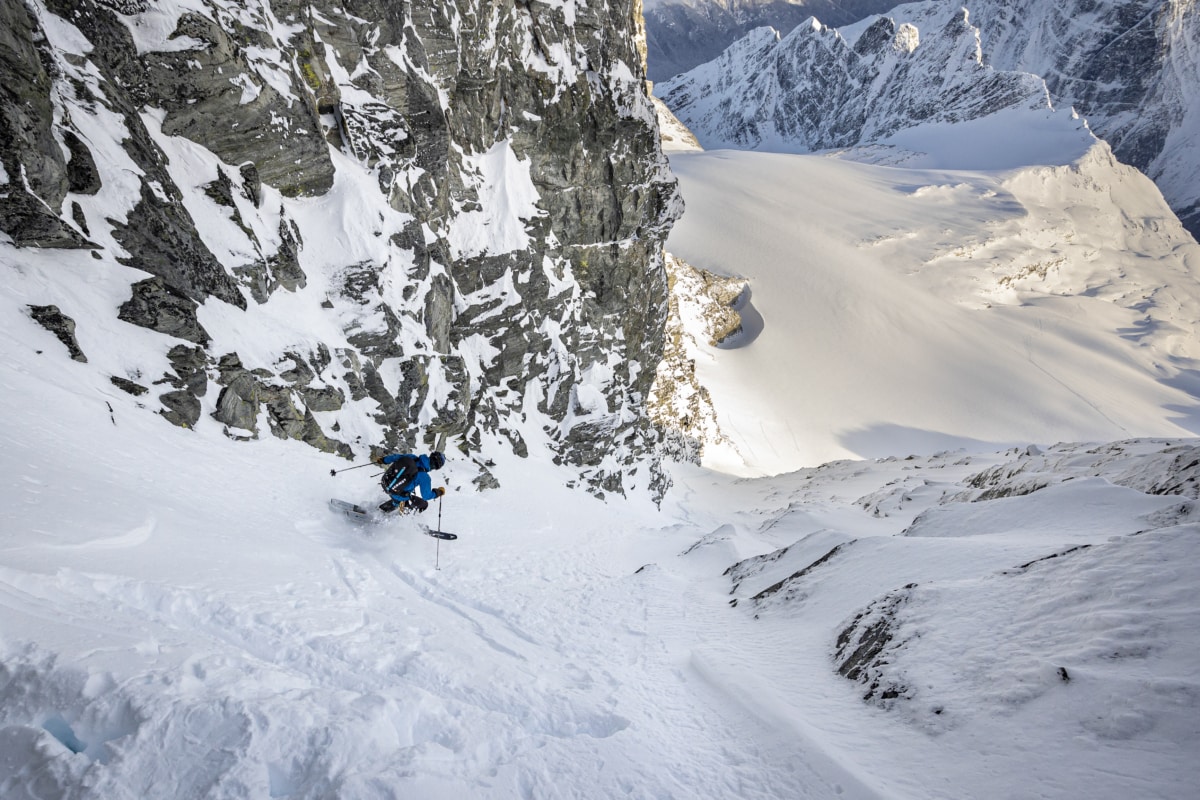
The Avalanche Hazard Of Couloir Skiing
A fair warning: couloir skiing is prime avalanche terrain which sheds often. The feature is essentially a large terrain trap with no escape, in other words, a funnel for avalanches. In some situations, you can climb a ridge to enter the couloir. This is the ideal situation since you’ll be able to assess the snowpack at the top of the line where conditions are usually more hazardous. Wind-loading is typically much more prominent at the top and the snowpack is shallow and rocky which makes it easy to trigger. A safely executed ski cut might do the trick. However, this isn’t always possible. Bootpacking up the feature may be the only way to its top. The only solution: assess the snowpack at the bottom of the couloir. The conditions at the top remain a wild guess at the best of times.

Pay close attention to the couloir’s aspect. North-facing lines tend to have much wind loading while south-facing lines are exposed to solar warming, both potential triggers. It’s also easy to be surprised by cross-loaded wind slabs triggered below the rock walls lining the couloir’s flanks. Some days, it came down to skiing a minefield of wind slabs, carefully monitoring for snow density changes below your skis. In retrospect, I should have chosen a more conservative objective instead. Live and learn!
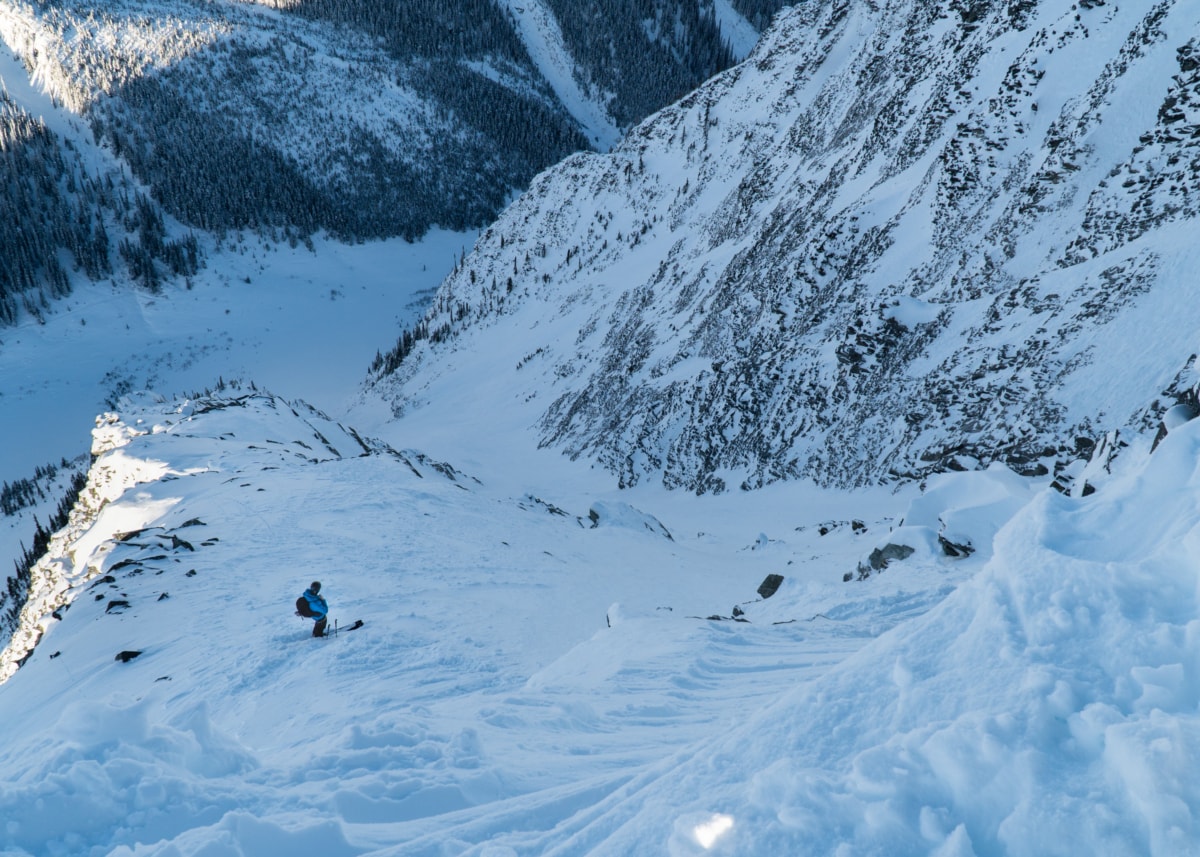
As a rule of thumb, I don’t bootpack up a couloir if I’m forecasting natural avalanche activity or poor visibility. I prefer to see the surface wind effect and blowing snow at the top which gives me an idea of the wind loading. I’ll wait for fair weather, reducing the unknowns. I’m also continuously looking for surface instabilities (wind/storm slabs) as I plant my ice axe or poles in the snow. Sometimes, I tour up to a couloir’s exit fan and notice it has slid recently. On one side, the skiing will most likely be horrendous. On the other, the avalanche instability has been triggered naturally. One less problem to deal with…
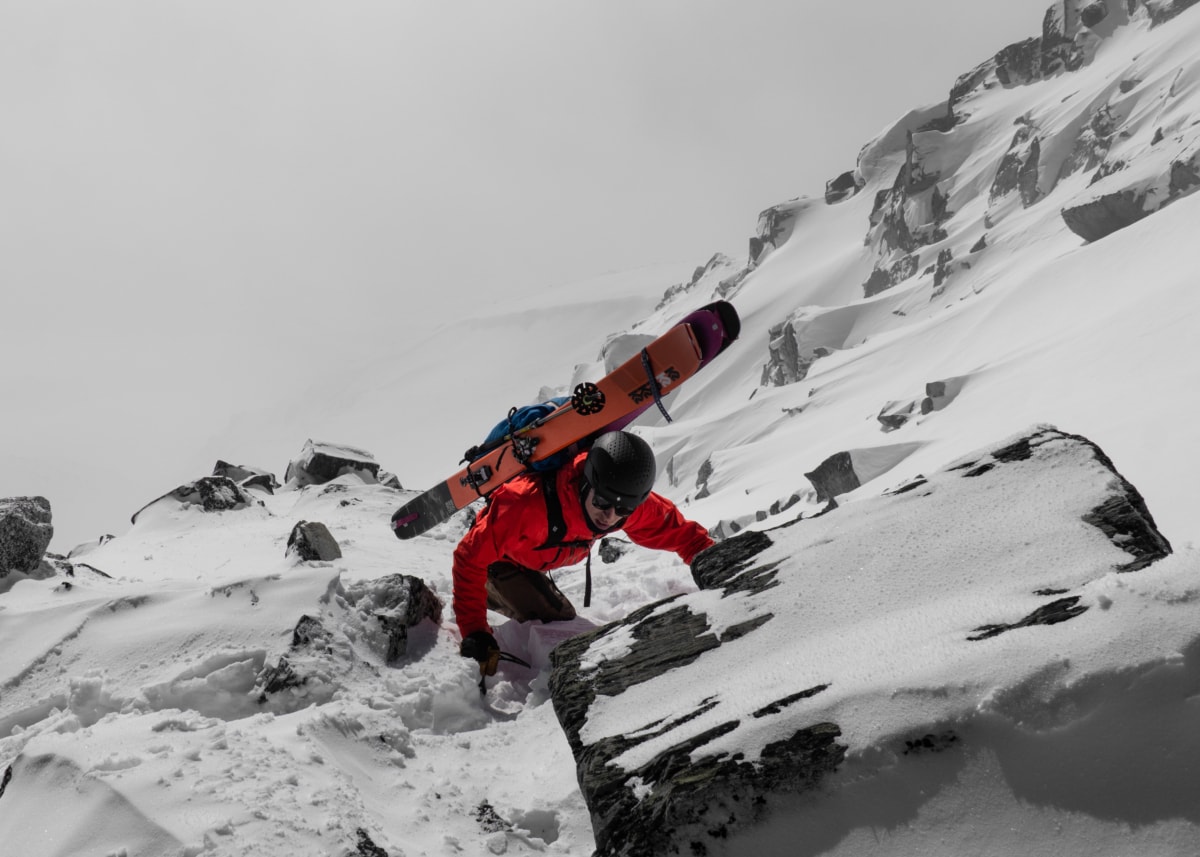
For Pros: Avalanche NW Couloir
The Avalanche NW Couloir has some of the best and steepest couloir skiing in Rogers Pass. Its 55-degree top pitch funnels you down a winding choke that opens up into the vast Kors-Thomas Bowl and further down, the lower slopes of Avalanche Crest. Accessed from the NRC Col and the crevassed Avalanche North Glacier, an exposed but short-lived bootpack takes you to a col, nestled between the two summits of Avalanche Mountain, granting you panoramic views of the Avalanche Glacier and the Sir Donald Range.

As an option, you can also ski the south face of Avalanche Mtn from the col. Don’t forget your boot crampons and ice axe. The snow at the top of the couloir is often wind-affected (think wind slabs) and rock-hard. Good luck!
For Experts: Grizzly Couloir
The Grizzly Couloir is a classic of the Connaught Creek area. Often one of the first lines to be skied after a storm cycle (or during), it’s hard to get some freshies in this one. Fortunately, you can access its entrance by uptracking Teddy Bear Trees and scrambling on the Grizzly SW Ridge to the summit of Grizzly Mountain. It’s possible to ski cut the entrance effectively to test conditions.

The couloir itself widens at the top and is terminated by an often rocky choke at its base, a textbook terrain trap in case of an avalanche. Keep in mind, that the skier’s right is often cross-loading by prevailing winds and the line is south-facing. Solar warming is a serious problem during most of its skiable season. Once you exit the couloir, you get to ski the epic Grizzly Bowl down to Connaught Creek. The choke below Grizzly Bowl is often in rough shape. It’s best to cut skiers right into Teddy Bear Trees. In any case, Grizzly couloir is high on the list of the best couloir skiing in Rogers Pass.
For An Appetizer: Christmas Couloir
It’s hard to describe the Christmas Couloir. Is it a couloir, a face, or a half-couloir? Take a look at terrain photos yourself. You might find an answer. The south-facing couloir/face is flanked to the left by the headwall of Ursus Major Mountain. It’s accessed by continuing past Balu Pass into the Ursus Major South Bowl. While I prefer to keep skins on and uptrack along the nose of the face, I’ve also bootpacked the couloir in its entirety when conditions allow.

In good condition, it’s a scenic line that isn’t as committing as some of the other ones mentioned in this post. As with any south-facing couloir, solar warming is an issue. It certainly was during one of my worst close calls with an avalanche on this very feature. For a more involved line, I’ve scrambled the Ursus Major Ridge toward the summit from the top of Christmas Couloir and skied its north face into the Bruins Valley.
For A Ski-Mo Classic: Swiss Couloir
Swiss Couloir is a definite ski-mountaineering classic. A 2000m ascent through bushy forest, alpine meadows and vast glaciers takes you to its entrance. There’s no way around this one: you’ll need to bootpack 250m from the Swiss Glacier. At the top of your perch (3100m), one of the highest in the region, you’ll get jaw-dropping views of the Selkirk Mountains, seeing much further than Glacier National Park.
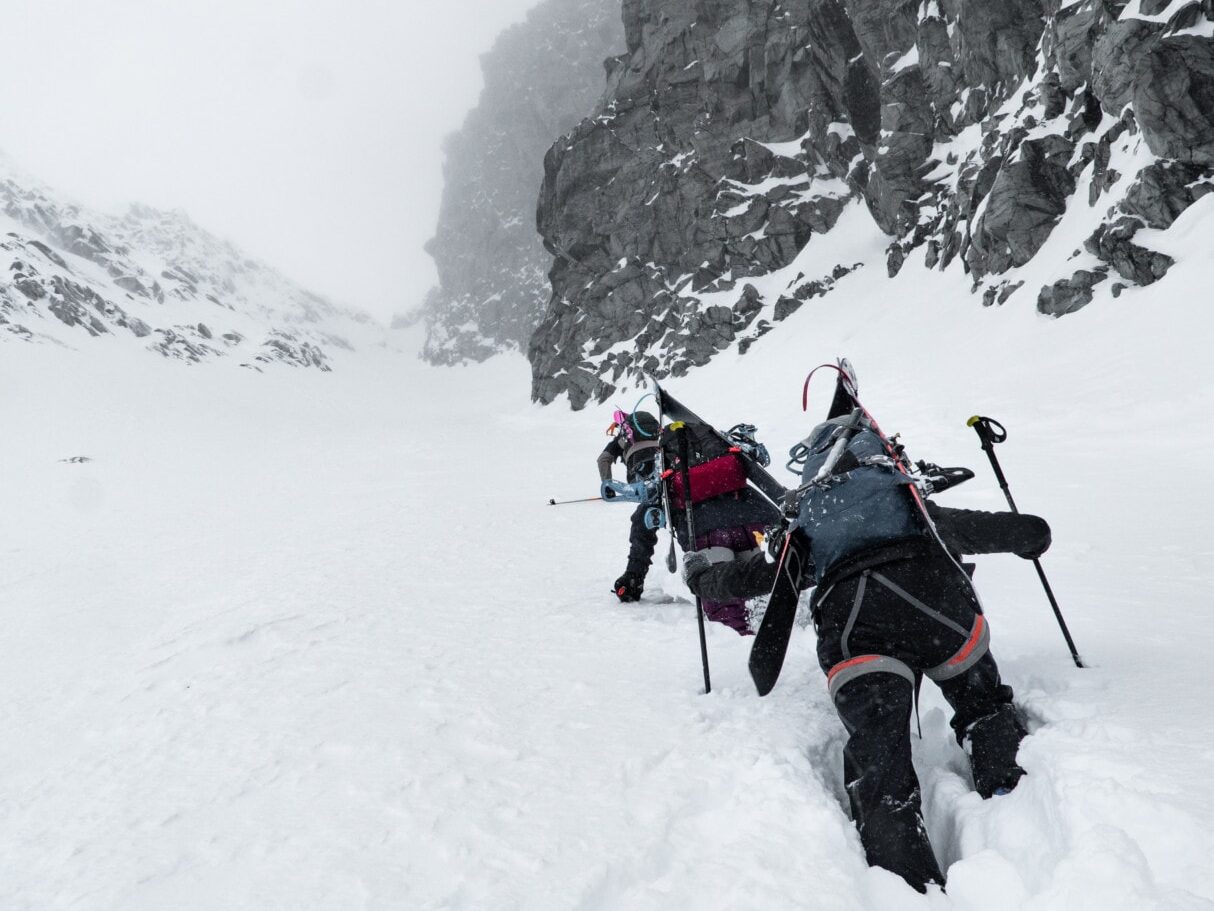
Given its high elevation, the snow conditions are often wind-affected, making for some challenging skiing. The ski quality tends to improve as you descend on the Swiss Glacier and the Lizard Moraine, a prominent alpine feature. When the weather is cooler, you can get some great skiing on the steep pillow lines lining the slopes of the Hermit drainage.
For A Shorter Day: STS Couloir
STS Couloir is a notorious beast of a line, and easily accessible as far as it goes for a ski-mountaineering route. The route offers 700m of epic north-facing couloir skiing with an average slope angle of 45 degrees. A mellow (but exposed) ascent along Connaught Creek takes you to Balu Pass where you continue on the Cheops West Ridge. Depending on conditions, reaching the couloir’s entrance might require a bootpack on the wind-hammered ridge. The couloir is commonly rappelled into (5-10m max.) to get past or cut the large cornices that build upon its crest. Once roped up, you can safely ski-cut the top.

Keep in mind the couloir is a heavily wind-loaded feature and the skier’s left flank harbours cross-loaded wind slabs. During your descent, you’ll be exposed to the large overhead cornices lining the Cheops West Ridge. There’s no doubt about it: it’s a scary place! Given its ease of access, after the cornice has been cut, the trip can be completed in under 5 hours and can be linked with Nikki’s Notch, a tasty appetizer to preceed STS Couloir.
For Tight Turns: Banana Couloir
Banana Couloir is a wonderful objective that’s hard to access and seldom skied. I’ve completed the line in blower powder conditions on the Sir Donald to Macdonald Traverse. The narrow, north-facing feature winds its way down the SW ridge of Mt Macdonald and terminates into the Crossover Bowl. While it can be bootpacked, the most elegant approach is through the NRC Col and the shallow, rocky Macdonald South Face. Keep in mind that the face always has a rotten snowpack with questionable avalanche stability. This route makes for a great traverse from the NRC parking lot to the Hermit lot.
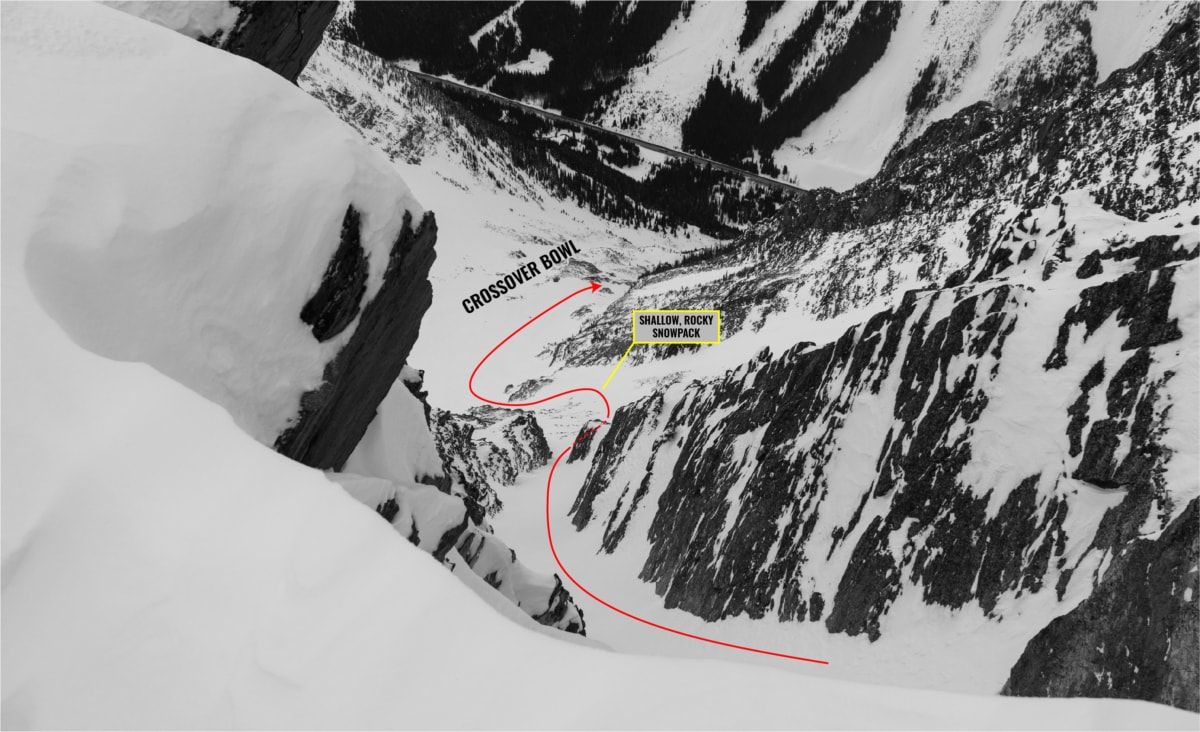
To enter the couloir, a 10m rappel is often needed. With a deep snowpack, you can sneak through a choke at the top avoiding the need for rope work. The couloir is 4-5 meters wide at most. Large enough to link some precise, tight turns but not too narrow to force a jump turn. Once you exit the Banana Couloir, you’ll be exposed to the large overhead slopes lining Crossover Bowl but you’ll find some excellent, wide-open skiing. When it comes to the best couloir skiing in Rogers Pass, the Banana Couloir is a not-so-known bonus line.
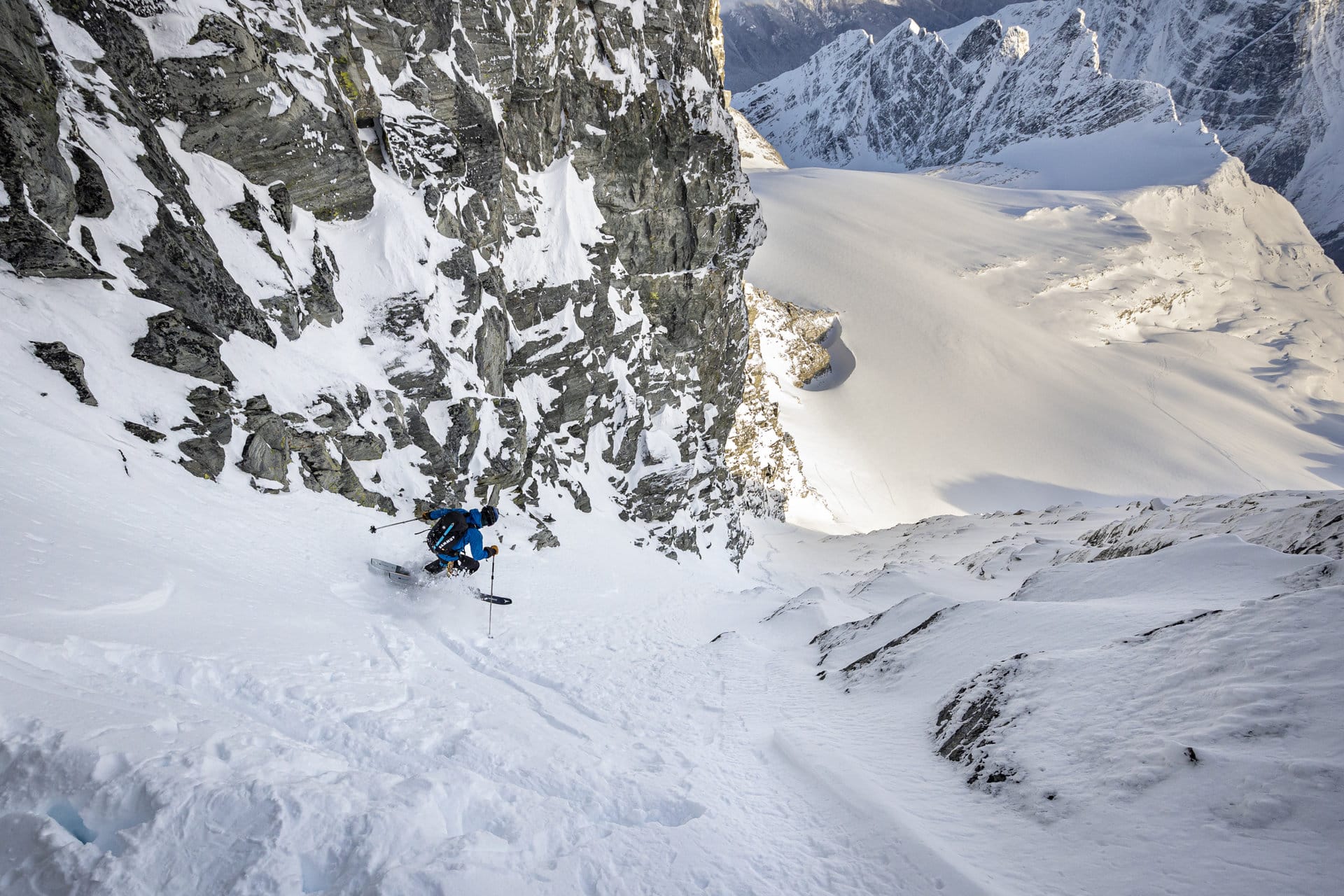
Hey do you offer guiding services? You seem like the type of energy I’d want to go in the mountains with!
Hey Stuart, I’m currently going through the guiding apprenticeship. I’ll be able to offer my services as a ski guide come winter 2025-26 depending on permitting. Let me know if you have any questions about ski lines or, generally speaking, ski touring/splitboarding. I’ll happily help you out!
Oliver, could would you be willing to send me your track from the dome traverse? I saw that is on your page, but would love to get the track plugged into my mapping app. Thanks so much.
Hi Daniel,
You can expect a track by email soonish.
Thanks,
Oli